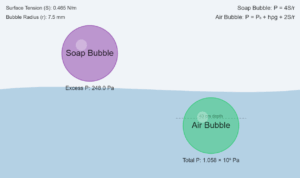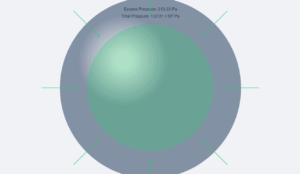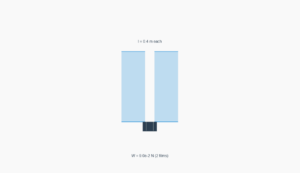Enhanced Viscosity Measurement Simulation
This simulation shows how increasing the hanging mass affects the block's movement through a viscous liquid. The motion is now more visible with enhanced movement range.
System Parameters
Simulation Controls
Calculated Results
Tension Force (T = mg): 0.098 N
Shear Stress (T/A): 0.98 Pa
Strain Rate (v/d): 0.00 s⁻¹
Viscosity Coefficient (η): 0.00 Pa·s
Example Problem
Example 9.8 A metal block of area 0.10 m² is connected to a 0.010 kg mass via a string that passes over an ideal pulley (considered massless and frictionless). A liquid with a film thickness of 0.30 mm is placed between the block and the table. When released, the block moves to the right with a constant speed of 0.085 m/s. Find the coefficient of viscosity of the liquid.
Solution
The metal block moves to the right because of the tension in the string. The tension (T) is equal in magnitude to the weight of the suspended mass (m). Thus, the shear force (F) is:
F = T = m × g = 0.010 kg × 9.8 m/s² = 0.098 N
Shear stress on the fluid:
Shear stress = Force / Area = 0.098 N / 0.10 m² = 0.98 Pa
Strain rate:
Strain rate = Velocity / Thickness = 0.085 m/s ÷ 0.30 × 10-3 m ≈ 283.3 s-1
Viscosity coefficient (η):
Viscosity = Shear stress / Strain rate = (0.098 N × 0.30 × 10-3 m) ÷ (0.085 m/s × 0.10 m²) = 3.46 × 10-3 Pa·s
Try setting the simulation parameters to match this example (mass: 0.010 kg, area: 0.10 m², thickness: 0.30 mm) and observe the results!



